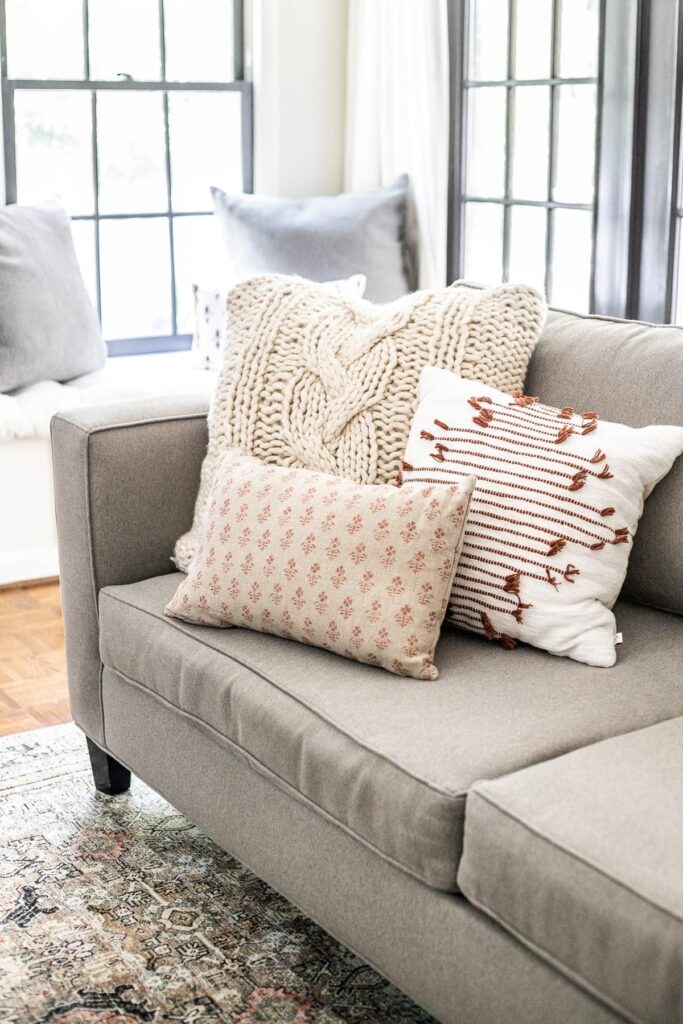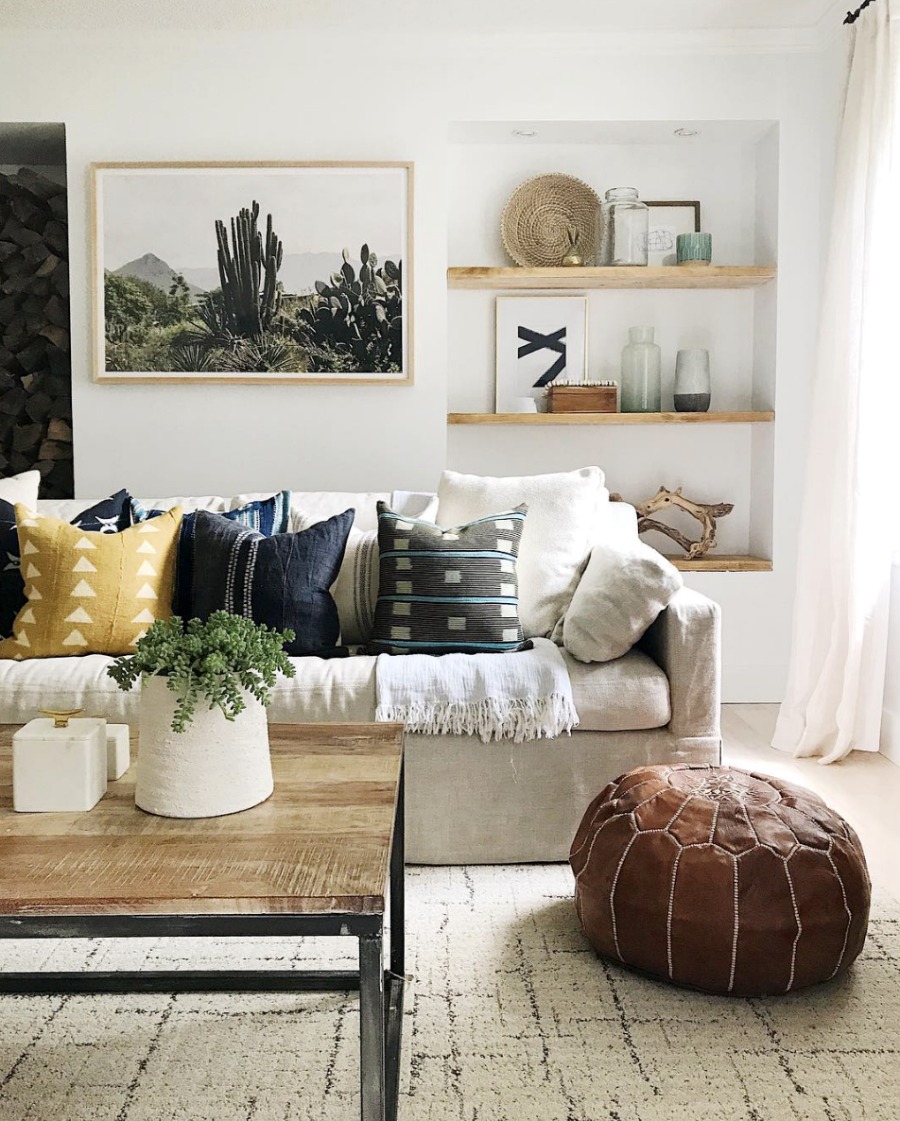Throw pillows may appear to be an afterthought, but they actually do a lot to assemble space and give it a finished appearance. How do you choose, though, with the countless combinations of patterns, colors, materials, and textures? Further, how do you make them feel like an intentional part of the design and not like something you know you should include but have no idea how to make them “go” in the room?
It is possible to strike a balance between a well-organized mess on your couch and one that is haphazard! You can do it without losing it in the HomeGoods pillow section. You can effortlessly mix and match your throw pillows like a pro who’s done this a thousand times with a vision for how you want your room to feel and a few easy, designer-approved tips!
How To Mix And Match Pillows On A Sofa?
1. Consider Your Existing Scheme
To keep your home’s design cohesive and flowing, you must first determine how your chosen cushions might fit into the overall design scheme of your house.
2. Choose Three Colors
First, choose a “color story” to follow for your pillow selection. It is best to use three distinct hues that are drawn from other elements in the space, such as the wall color, the rug, your bedding, or the curtains. The look will still be cohesive even if you select a variety of pillows with different patterns as long as they at least have the same colors.
A few examples of color combinations that always look great together:
- Dark blue + deep red + pink
- Deep red + orange + deep green
- Magenta + violet + mustard yellow
- Dark green + gold + magenta
- Sage green + peacock blue + gold
3. Introduce Texture
The effect and usefulness of the fabric or material of the upholstery should be taken into consideration when looking for living room seating ideas, such as a new sofa or armchair. Pillows should follow suit.
‘Adding texture to the arrangement is something else to think about when styling your pillows. A room can be given life by using natural fabrics or heavily patterned and printed materials in contrast to more neutral fabrics.’
4. Choose Patterns
As long as each pattern includes at least one of the colors in the three-color story you have chosen, you can combine and match any three patterns. It’s often simpler to choose your “lead” pattern first, which is generally the largest pattern and the one that contains all three colors in your color story. Then, only one or two of the colors may be present in the secondary patterns you choose. Working backward and selecting a lead pattern using pillows you already own is much more challenging.
Here are a few pattern-mixing ideas to try:
- One floral + one geometric + one solid color
- One buffalo check + one toile + one ticking stripe
- One chevron + one dotted + one knit texture
5. Choose Three Pattern Sizes
When applying the Rule of Three, it’s crucial to consider the scale of your patterns because you don’t want them to compete with one another. Choose three distinct patterns instead, letting one pattern take the lead.
Your lead pattern should be the biggest pattern in the group, followed by a medium-sized print, like a stripe or small houndstooth. So the third pattern ought to be the most subdued, like a solid color with an interesting texture, a swiss dot pattern, or a pattern with a subtle tone-on-tone design, like a damask stripe.
6. Combine Solids With Prints
By choosing a few prints you love and working neutrals and plains around them, you can create a successful color scheme. This is a great way to update a design concept as well; for example, your sofa and plain cushions may remain throughout the year while you replace them with new prints each season to give your sofa a fresh appearance.
Make sure the scale of the patterns on your pillows complements each other. For example, the sofa pictured above has a large print that is complemented by smaller motifs or simpler prints, rather than competing with them.

How Many Pillows Do You Put On A Couch?
Since the most important thing is that your sofa is comfortable, there is no set number of pillows that should be placed on a couch. If you’ve recently been looking for living room ideas, you may have noticed the various approaches designers take to this.
If aesthetics are a concern, sticking to three pillows for a smaller sofa and five for a larger one will produce a pleasing result.
Additional Tips
Once you master the Rule of Threes, also consider these other principles used by room designers:
- Odd numbers look modern: Remember that odd numbers, such as three or five, work best when arranging throw pillows for a contemporary look. Odd numbers typically appear more artistic in design aesthetics and keep in mind that a smaller group of larger pillows looks more contemporary than a scattering of smaller ones.
- Mix textures: Textures should not be ignored, despite the importance of pattern and color blending. Play with the contrast between soft and fuzzy and smooth and rough. Consider faux fur, velvet, linen, knit wool, and tasseled accents. You can use touch and feel in inventive ways if you stick to your color and pattern theme.
- Fill matters: When purchasing throw pillows, take into account the fill and how it will impact the appearance. A feather-and-down fill, for example, has more “give” and a softer squish. In general, foam and other synthetic fills are more cost-effective and stiffer. Although they don’t appear as opulent, these pillows will hold their shape better.
- Even numbers look traditional: Even numbers of similar pillows, such as two or four, look neat and organized and create a balanced, symmetrical appearance, especially on your bed or couch.
